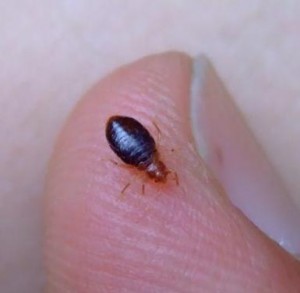
Favorite Hiding Places for Bed Bugs
During the daytime, they prefer to hide close to where people sleep. Their flattened bodies enable them to fit into tiny crevices–especially those associated with mattresses, box springs, bed frames and headboards. Bed bugs do not have nests like ants or bees, but do tend to congregate in habitual hiding places.
- Box Spring
- Couch and/or Chair
- Mattress
- Bed Frame and/or Head Board
- Walls and/or Ceilings
- Baseboard
- Dresser and/or Night Stand
- Office Cubicles
- Electrical Outlets
- File Cabinets
BED BUG BIOLOGY

What you need to know about bed bugs:
After a 30 year vacation from bed bugs in this country, they have once again gained a foothold in society due to increased travel, improved and more targeted treatments of other pests, and the lack of public awareness and acceptance.
Bed Bug Biology:
Bed bugs are small, flattened insects that feed only on the blood of mammals, primarily humans. Adult bed bugs are approximately ¼ inch long with reddish brown, oval, flattened bodies. They resemble ticks or young cockroaches, and are almost identical to bat bugs in appearance, and can sometimes be mistaken for these pests, thus proper identification is critical for management strategies. The nymphs (immature bed bugs) resemble the adults but are much smaller and lighter in color and therefore more difficult to locate and identify. None of the stages of bed bugs can fly, but all can move rapidly and are proficient climbers easily navigating floors, furniture, walls and ceilings. Females can only reproduce at the adult stage, but can lay up to 5 eggs a day and up to 500 in their lifetime, which can result in rapid population growth from the smallest of infestations making early detection a key component to a successful management plan. Eggs are tiny, transparent and nearly impossible to locate with the naked eye.
Bed bugs are unique pests that cannot be managed through typical pest control practices. It takes a true bed bug specialist and a fully integrated approach for consistent bed bug control and management.
